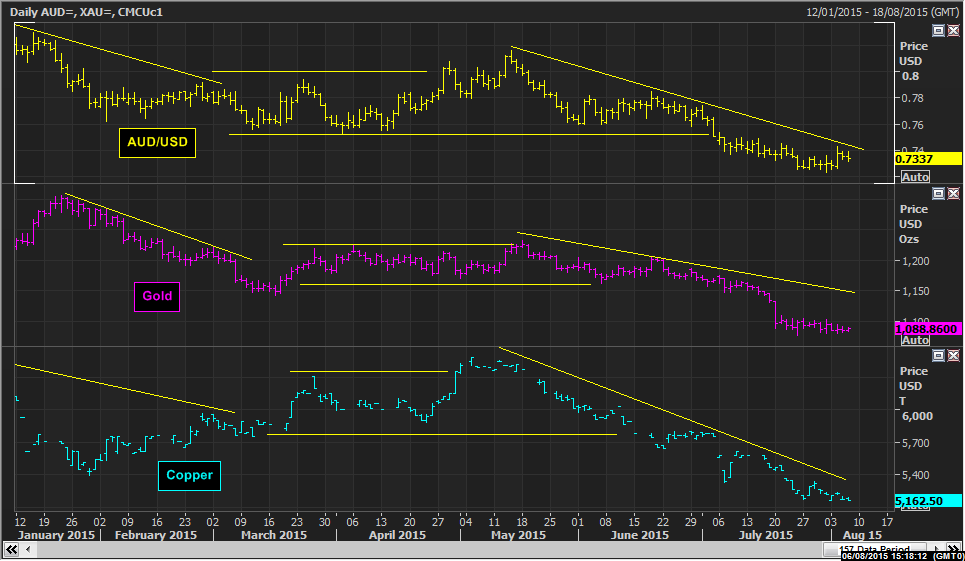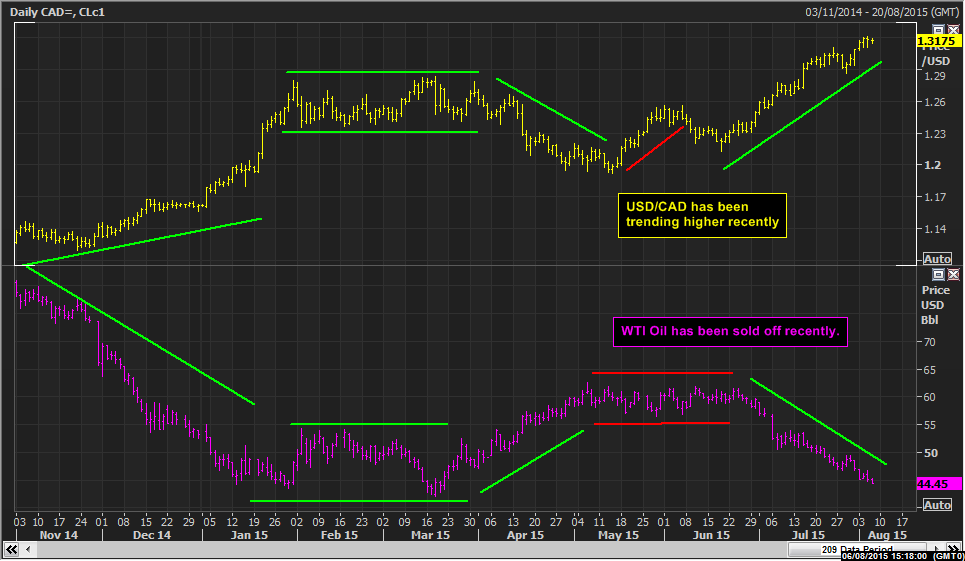The precipitous fall in commodity prices in the past few weeks have had a notable knock-on impact in the Forex markets. There are key correlations that can be clearly seen and that means that if you can call the commodities correctly, you can profit in the forex space too.
There is a reason why the Australian dollar and the Canadian dollar are known as the commodity currencies. For Australia, over a quarter of exports comes from gold, copper and iron ore; whilst Canada produces around 4 million barrels of oil per day and is in the top 5 suppliers in the world. So, it may come as little surprise that there is a strong correlation between the performance of the Aussie and the metals prices, whilst the prospects of the Canadian Loonie are closely tied to that of the price of oil.
The charts certainly back up this assertion. The chart below shows how the Aussie tracks both gold and (to a lesser extent) copper. The gold price started falling in mid-May and has been trending lower ever since. Gold may see the odd intraday bounce but there is still little sign of any real recovery. The technical indicators suggest that further pressure will be seen on the $1,077 low, whilst I am looking further out and believe that a retreat back towards $1,000 cannot be ruled out.
This does not bode well for the Aussie dollar. The price of AUD/USD bounced this week on the back of the Reserve Bank of Australia not being perhaps quite as dovish as the market had expected. However, the price of gold (and copper for that matter) remains downbeat and this should continue to be a drag on the Aussie. I expect therefore that if the metals remain under downside pressure then so will the Aussie dollar.

It is a similar story for the price of US Light Sweet Oil (ie. WTI) which continues to have an impact on the Canadian dollar. The chart below shows a very strong negative correlation between WTI and USD/CAD (this is because an increase in USD/CAD is negative for the Canadian dollar). The only time that this relationship proved to be a touch suspect was for about three weeks in May, however, other than that, throughout the rest of 2015, the correlation has been almost rock solid.
The inference from the chart below is that aside from a small degree of Volatility , the Canadian dollar does not diverge for too long from the price of WTI. The chart also shows that the seemingly inexorable decline on WTI is now likely to see a retest of $42 again, the March low. That should mean that we will see further upside in due course on USD/CAD. The big test though will come with a test of $42 on WTI, however, if there is an appetite for further downside into new multi-year lows on WTI, then this should mean even further upside on USD/CAD.















